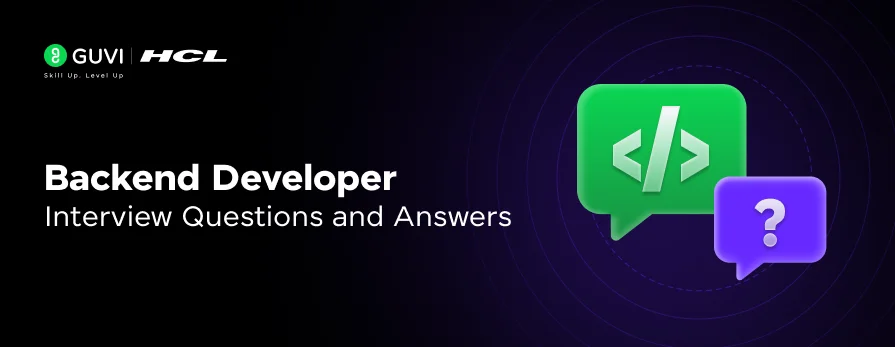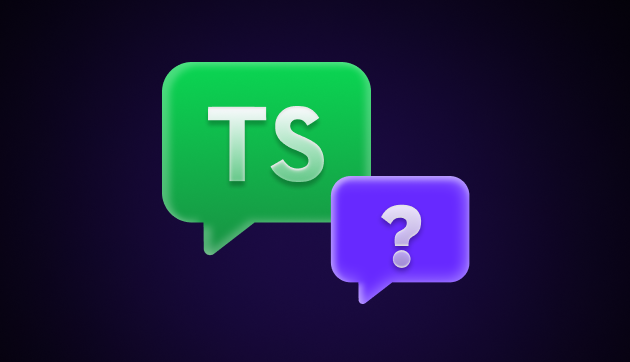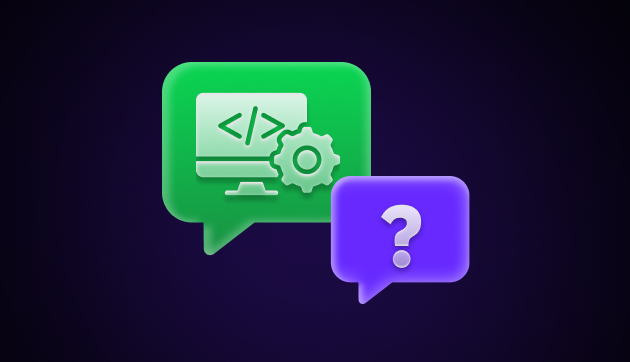![Top 25 Business Analyst Interview Questions and Answers [2025] 1 Post thumbnail](https://www.guvi.in/blog/wp-content/uploads/2023/07/Business-Analyst-Interview-Questions-With-Answers.png)
Top 25 Business Analyst Interview Questions and Answers [2025]
Jul 02, 2025 8 Min Read 8390 Views
(Last Updated)
Have you ever wondered how Instagram studies you and what you want and puts it out on your feed? That’s what data and business analysis are: analysing the customer base to better cater to their needs. Hence, it’s no wonder that most organizations (88%) think business analysis is vital to their success.
And due to growing demand as well as diverse skill sets, business analyst interviews have become tougher as companies look for the best talent to fill this key role. The Business Analyst role has grown into a cornerstone of organizational success. Top companies like Google value their Business Analysts highly.
Hence, to make your preparation easier, this detailed guide covers the top 25 business analyst interview questions and answers you should master. You’ll find simple questions for beginners, technical problem-solving scenarios, role-specific situations, and behavioral questions. These will help you prepare well for your upcoming interview.
Table of contents
- Basic Business Analyst Interview Questions and Answers (For Freshers)
- What is the role of a business analyst in an organization?
- What are the key skills required to become a successful Business Analyst?
- What is a requirement? What are the different types of requirements?
- What is the difference between a Business Requirement and a Functional Requirement?
- How do you gather requirements from stakeholders?
- What is the SDLC, and what is the BA’s role in it?
- What is the purpose of a SWOT Analysis in Business Analysis?
- What is a Use Case?
- What is the difference between BRD and SRS?
- What is the importance of stakeholder analysis in a project?
- Technical and Problem-Solving Business Analyst Interview Questions and Answers
- How do you handle ambiguous or incomplete requirements?
- What tools do you use for business analysis and why?
- Explain how you perform a GAP analysis.
- What is the importance of Use Case Diagrams in business analysis?
- How do you validate requirements to ensure accuracy and completeness?
- How do you approach Root Cause Analysis (RCA) in projects?
- What’s the difference between Data Modeling and Process Modeling?
- How do you prioritize conflicting requirements from multiple stakeholders?
- How do you estimate time and effort for a business analysis task or project?
- What experience do you have with SQL and database systems?
- Scenario-Based/Role-Specific Business Analyst Interview Questions and Answers
- How would you handle a situation where two key stakeholders have conflicting requirements?
- Imagine a developer says a requirement cannot be implemented due to technical constraints. What would you do?
- What would you do if you joined a project mid-way and there is no documentation available?
- A client has a seasonal e-commerce shop that sells limited items. What potential problems do you foresee with their revenue streams?
- How do you explain highly technical information to collaborators and decision-makers who lack technical backgrounds?
- Concluding Thoughts…
- FAQs
- Q1. What are the essential skills for a successful business analyst?
- Q2. How can I prepare for a business analyst interview?
- Q3. What is the typical salary range for business analysts in India?
- Q4. What are some common tools used by business analysts?
Basic Business Analyst Interview Questions and Answers (For Freshers)
Getting ready for your first business analyst interview might seem daunting. You need to grasp simple concepts that interviewers often ask about when you start your career as a business analyst. These entry-level questions will help you build a strong foundation in this ever-changing field.
![Top 25 Business Analyst Interview Questions and Answers [2025] 2 1 2](https://www.guvi.in/blog/wp-content/uploads/2025/04/1-2.png)
1. What is the role of a business analyst in an organization?
This question shows up in almost every business analyst interview, whatever your experience level. A business analyst’s role is vital – they connect different stakeholders within an organization. Your answer should show how you:
- Act as a bridge connecting various domains and departments
- Balance the needs of different stakeholders while meeting business objectives
- Find business problems through data analysis to maximize value for shareholders
A complete answer should stress: “A business analyst bridges the gap between IT and business using data analytics to assess processes, determine requirements, and deliver data-driven recommendations to executives and stakeholders. They involve business leaders and users to understand how data-driven changes to processes, products, services, and software can improve efficiencies and add value.”
2. What are the key skills required to become a successful Business Analyst?
To become a successful BA, you need a mix of technical and soft skills. Key skills include strong communication, analytical thinking, stakeholder management, documentation skills, understanding of business processes, proficiency in tools like Excel, SQL, or Tableau, and basic knowledge of software development life cycles (SDLC). Freshers are expected to show potential in these areas even if they’re not yet experts.
3. What is a requirement? What are the different types of requirements?
A requirement is a condition or capability needed by a stakeholder to solve a problem or achieve an objective. In business analysis, there are generally four types of requirements:
- Business Requirements – High-level goals of the organization.
- Stakeholder Requirements – Needs of stakeholders that support the business requirements.
- Functional Requirements – Specific behavior or functions of the system.
- Non-functional Requirements – Quality attributes like performance, security, or usability.
Understanding these helps BAs document and prioritize tasks more effectively.
4. What is the difference between a Business Requirement and a Functional Requirement?
A Business Requirement defines what the business needs, such as increasing customer satisfaction or reducing operational costs. A Functional Requirement defines how the system will meet those business needs, for example, allowing users to submit a feedback form through a web portal. Business Analysts are expected to translate business needs into functional specifications.
5. How do you gather requirements from stakeholders?
Requirement gathering is a crucial part of a BA’s job. Common techniques include:
- Interviews – One-on-one discussions with stakeholders.
- Workshops – Collaborative sessions to brainstorm or validate ideas.
- Questionnaires – Used when stakeholders are geographically dispersed.
- Observation – Studying users’ interaction with systems or processes.
- Document Analysis – Reviewing existing documents or reports.
Freshers should understand when to use each method depending on the project’s nature and stakeholders’ availability.
Discover: A Complete Business Analyst Career Roadmap
6. What is the SDLC, and what is the BA’s role in it?
The Software Development Life Cycle (SDLC) is a process used to develop software systematically. It includes stages like requirement gathering, analysis, design, development, testing, deployment, and maintenance.
As a Business Analyst, your role is mostly in the early stages: gathering requirements, documenting them, supporting the design team, and assisting during testing to ensure that the product meets the business expectations.
7. What is the purpose of a SWOT Analysis in Business Analysis?
SWOT Analysis stands for Strengths, Weaknesses, Opportunities, and Threats. It is a strategic tool used to assess internal and external factors that can impact a business or project. For Business Analysts, SWOT helps in identifying business opportunities, understanding risks, evaluating competition, and making informed decisions. It is especially useful in the early stages of project planning or when assessing a new business initiative.
8. What is a Use Case?
A Use Case describes how a user (or “actor”) interacts with a system to achieve a goal. It outlines the system’s behavior in response to user inputs under various conditions. For example, a “Login Use Case” would describe the steps involved when a user tries to log in, including validation and error handling. Use Cases help in defining functional requirements and are often visualized using diagrams.
9. What is the difference between BRD and SRS?
- BRD (Business Requirements Document) outlines the high-level business goals and objectives. It’s written in simple, non-technical language and is primarily for business stakeholders.
- SRS (Software Requirements Specification) is more detailed and technical. It includes functional and non-functional requirements and is used by developers and testers.
As a BA, you may be responsible for preparing both, depending on your organization’s structure.
Explore: Business Analyst – An Insight into Their Life
10. What is the importance of stakeholder analysis in a project?
Stakeholder analysis is the process of identifying all individuals or groups affected by the project, understanding their needs, and evaluating their influence and interest. This helps the Business Analyst:
- Prioritize communication
- Manage expectations
- Reduce resistance
- Ensure the right people are involved at the right time
It’s a critical early step to drive collaboration and make sure the project delivers value to those who matter most.
Technical and Problem-Solving Business Analyst Interview Questions and Answers
Technical interviews go beyond simple concepts to review your specialized knowledge and problem-solving skills. Industry data shows business analysts with strong technical skills earn up to 25% higher salaries in India. This makes mastering these questions vital.
![Top 25 Business Analyst Interview Questions and Answers [2025] 3 2 2](https://www.guvi.in/blog/wp-content/uploads/2025/04/2-2.png)
1. How do you handle ambiguous or incomplete requirements?
Ambiguity in requirements is one of the most common challenges a BA faces. To resolve this, I begin by conducting elicitation sessions such as stakeholder interviews, focus groups, or workshops to gather more context. If necessary, I use prototyping tools or wireframes to visualize the expected outcome, helping stakeholders articulate their needs more clearly.
I also ask clarifying questions, document all assumptions, and validate them through a requirements review process. Maintaining a Requirements Traceability Matrix (RTM) helps track each requirement to its source and avoid discrepancies. Ambiguity, if left unchecked, can lead to scope creep, delays, and cost overruns — so resolving it early is critical.
2. What tools do you use for business analysis and why?
As a Business Analyst, tool selection depends on the project’s nature, scale, and collaboration needs. Here’s a breakdown of commonly used tools:
- Excel: Ideal for data analysis, pivot tables, forecasting models, and creating requirement matrices.
- SQL: Essential for querying databases, validating data migration, or identifying trends directly from raw data.
- Power BI/Tableau: Useful for interactive dashboards, KPI tracking, and data visualization.
- JIRA/Confluence: Widely used for agile project tracking, creating user stories, and documentation.
- Balsamiq / Figma: For wireframing and prototyping UI/UX solutions.
These tools enhance collaboration, improve accuracy, and streamline requirement communication across technical and business teams.
3. Explain how you perform a GAP analysis.
A GAP Analysis helps identify the difference between the current state and the desired future state. I approach it systematically:
- Define Current State: Document existing workflows, systems, or capabilities through process mapping or stakeholder inputs.
- Identify Future Goals: Understand business objectives or new regulatory requirements.
- Analyze the GAP: Identify what’s missing — for instance, lack of automation, reporting, or scalability.
- Propose Recommendations: Offer actionable solutions such as new tools, improved processes, or training programs.
Example: A client may want real-time reporting, but their current system only supports monthly exports. The GAP is the lack of live data visibility, and the solution might involve implementing Power BI with automated data refreshes.
Also Read: 10 Best Websites to Learn Business Analytics in India
4. What is the importance of Use Case Diagrams in business analysis?
Use Case Diagrams are a visual representation of user interactions with a system. They help BAs, developers, and stakeholders understand the functional scope of a solution at a high level.
Each diagram includes:
- Actors (e.g., customers, admin users)
- Use Cases (e.g., “Place Order”, “Generate Invoice”)
- Relationships between actors and use cases
These diagrams simplify communication, avoid misunderstandings, and serve as the starting point for deeper requirement modeling. For example, when designing an online shopping app, use case diagrams clarify all user actions, helping developers identify and prioritize features.
5. How do you validate requirements to ensure accuracy and completeness?
Requirement validation ensures that what’s documented aligns with what stakeholders actually need and can realistically be implemented. My validation process includes:
- Stakeholder Reviews: Organize review sessions where stakeholders walk through requirements to confirm correctness.
- Prototypes & Mockups: Help visualize the requirement, especially for UI-heavy systems.
- Traceability Matrix: Ensures that each requirement maps to a business objective and test case.
- Peer Reviews: Collaborate with QA, developers, and fellow BAs to catch inconsistencies or conflicts.
Validation should occur before development begins to avoid expensive changes later. A validated requirement is clear, unambiguous, feasible, and testable.
6. How do you approach Root Cause Analysis (RCA) in projects?
Root Cause Analysis is used to diagnose the origin of a problem, rather than just treating symptoms. Here’s my typical approach:
- Start with the Problem Statement: E.g., “Customer churn has increased by 15%.”
- Apply the 5 Whys Technique: Ask “Why?” repeatedly to drill down to the root issue.
- Use Fishbone Diagrams: Categorize possible causes under labels like People, Process, Tools, and Technology.
- Validate Findings with Data: Use SQL or reports to confirm assumptions.
For example, if churn is high, we might discover that delayed support responses are to blame, which in turn is due to understaffing, leading to a recommendation for hiring or AI chat support.
7. What’s the difference between Data Modeling and Process Modeling?
- Data Modeling deals with the structure of data — entities, attributes, and relationships. It helps in designing the database architecture. Tools like ER diagrams show how tables relate to each other.
- Process Modeling focuses on business workflows, depicting how tasks, decisions, and data flow through the system. Tools like BPMN or flowcharts visualize these sequences.
Both are complementary. For instance, in building a loan approval system, process modeling outlines the steps (apply → verify → approve), while data modeling defines how applicant data is stored and validated.
8. How do you prioritize conflicting requirements from multiple stakeholders?
Conflicting requirements are inevitable in cross-functional projects. I resolve them by:
- Facilitating Prioritization Workshops: Bringing all stakeholders together to assess impact and urgency.
- Using MoSCoW Technique: Classify each requirement as Must, Should, Could, or Won’t.
- Weighted Scoring Model: Assign scores based on business value, technical feasibility, and risk.
- Aligning with Business Goals: I always link requirements back to strategic objectives to justify priority.
Open communication and maintaining neutrality are key. The aim is to build consensus while delivering maximum value within constraints.
9. How do you estimate time and effort for a business analysis task or project?
I use a combination of techniques to estimate effort:
- Work Breakdown Structure (WBS): Break the project into smaller tasks (e.g., Elicitation, Modeling, Validation).
- Three-Point Estimation: Calculate the average of optimistic, pessimistic, and most likely durations.
- Expert Judgement: Leverage experience or consult with SMEs for similar past initiatives.
- Historical Data: Reference previous project timelines to benchmark.
These estimates help set realistic timelines, allocate resources, and manage stakeholder expectations. I always factor in buffers for unknowns and revisions, especially in agile projects.
10. What experience do you have with SQL and database systems?
SQL knowledge is now a must-have for Business Analysts. This question looks at how well you can work with and analyze data. A detailed answer should cover:
- Your familiarity level: “I have experience writing SQL queries to retrieve and analyze data from databases. I’ve used SQL to create reports and dashboards that track key performance indicators.”
- Types of SQL statements you understand:
- DDL (Data Definition Language) – defines data structure
- DML (Data Manipulation Language) – used for inserting, deleting, and modifying data
- DCL (Data Control Language) – controls access to stored data
- TCL (Transactional Control Language) – organizes data adjusted by the DML
- Practical applications: “I’ve used SQL to determine which customers purchase which products, helping clients make important decisions about future product lines.”
You should also be ready to answer specific technical questions about SQL:
- INNER JOIN vs. OUTER JOIN: “INNER JOIN returns rows when there is a match in both tables, while OUTER JOIN returns all rows from one table and the matched rows from another table.”
- GROUP BY and HAVING clauses: “GROUP BY groups rows with the same values in specified columns into aggregated data, while HAVING works like the WHERE clause but on grouped records.”
Scenario-Based/Role-Specific Business Analyst Interview Questions and Answers
Questions based on scenarios test how well you can use business analysis knowledge in ground situations. Interviewers gain insights into your problem-solving approach. These questions simulate the challenges you’ll face at work. Case studies and scenario questions have become significant tools to assess your analytical and critical thinking skills.
![Top 25 Business Analyst Interview Questions and Answers [2025] 4 3 1](https://www.guvi.in/blog/wp-content/uploads/2025/04/3-1.png)
1. How would you handle a situation where two key stakeholders have conflicting requirements?
In such a scenario, a Business Analyst must act as a neutral facilitator. First, I would document both stakeholders’ requirements clearly and identify the areas of conflict. Next, I’d organize a joint meeting where I can walk them through the impact of each requirement on the project’s scope, cost, and timeline.
I would encourage a fact-based discussion and propose alternatives that align with business goals. For example, I might suggest prioritizing features based on ROI or implementing both requirements in different phases. This shows impartiality and fosters collaborative decision-making.
2. Imagine a developer says a requirement cannot be implemented due to technical constraints. What would you do?
I’d start by asking the developer for a detailed explanation of the technical limitation. Once I understand the constraint, I will revisit the requirement with the stakeholder to discuss potential modifications. Sometimes, a slight change in the requirement or approach can resolve the issue. If the business objective is critical, I’d explore alternate technical solutions or even escalate it to an architect. My goal is to bridge the gap between business needs and technical feasibility without compromising on either side.
3. What would you do if you joined a project mid-way and there is no documentation available?
In this case, I would begin by conducting stakeholder interviews to understand the business context and goals. I’d review any available artifacts, such as emails, meeting notes, or application prototypes.
I would then create documentation from scratch, starting with high-level business requirements and gradually diving into functional and non-functional requirements. Collaboration is key here; I’d validate my findings with the team to ensure accuracy. Creating clarity in a chaotic environment showcases a BA’s ability to bring order and structure.
Suggested Read: Business Analytics Syllabus | A Complete Guide
4. A client has a seasonal e-commerce shop that sells limited items. What potential problems do you foresee with their revenue streams?
This question tests your analytical skills and business sense. Here’s a thorough answer:
“A seasonal e-commerce business with limited items faces several challenges:
- Revenue risk: Five items make the business vulnerable if one product fails. Sales data should show how each product performs. They should broaden their product range.
- Cash flow issues: Seasonal operation means careful off-season money management. They need detailed cash forecasts and year-round revenue opportunities through related products.
- Stock management: Short selling seasons make demand prediction hard. Up-to-the-minute data analysis helps adjust buying decisions.
- Customer loyalty: Off-season customer engagement is tough. A CRM strategy with content marketing, early deals, or loyalty programs helps keep customers interested.
- Technical capacity: Their platform must handle busy periods. Their infrastructure needs review to ensure it scales well.”
This structured analysis with practical fixes shows your problem-solving skills.
5. How do you explain highly technical information to collaborators and decision-makers who lack technical backgrounds?
Business analysts must bridge technical gaps. Your answer should show how you make complex ideas simple:
“Clear technical communication starts with knowing your audience. My method includes:
- Study your audience: I check their technical knowledge first and adjust my message.
- Show, don’t tell: I use diagrams and examples. Database relationships become library systems with books and catalogs.
- Focus on results: I highlight business benefits over technical details. Instead of explaining algorithms, I show how they save 30% processing time.
- Layer information: I start simple and add details as needed. This helps people grasp the basics first.
- Ask for input: I check if people understand and change my approach based on their feedback.”
If you’re serious about mastering Business Analysis and acing your interviews, GUVI’s Business Analyst Course is the perfect launchpad. This industry-aligned, placement-driven course equips you with real-world skills, hands-on tools like Excel, SQL, and Power BI, and expert mentorship to crack top business analyst roles in 2025 and beyond.
Concluding Thoughts…
For you to ace your business analyst interviews, you need really good preparation in several areas. As we’ve discussed above, you must know both technical concepts and people skills, and show how you solve problems in practice.
Leading companies look for business analysts who can connect the technical and business worlds effectively. The best candidates prove their expertise with ground examples. They use well-laid-out approaches to solve problems and manage stakeholders expertly.
Make sure you understand each type of question completely. Learn the technical concepts well and explain complex ideas in simple terms. Your examples should showcase your achievements clearly. The combination of analytical thinking and clear communication will make you stand out in your business analyst interview for sure. Good Luck!
FAQs
Critical thinking, problem-solving, and decision-making are the three most crucial strengths for a business analyst. Additionally, strong communication skills, data analysis capabilities, and stakeholder management are important for success in this role.
To ace a business analyst interview, research the company thoroughly, prepare examples of your past experiences using the STAR method, brush up on technical skills like SQL and Excel, and be ready to discuss your problem-solving approach. Practice explaining complex concepts simply and prepare questions to ask the interviewer.
Business analysts in India typically earn between ₹4,00,000 to ₹18,00,000 annually, depending on experience, skills, and industry. Those with advanced technical skills or specializations in areas like financial analysis can command higher salaries.
Business analysts commonly use tools such as Microsoft Office Suite (especially Excel), SQL for database queries, business intelligence tools like Power BI or Tableau, and project management software. Proficiency in UML (Unified Modeling Language) for creating visual representations of systems is also valuable.



























![Top 35+ AWS Interview Questions and Answers [2025] 11 aws interview questions](https://www.guvi.in/blog/wp-content/uploads/2025/07/aws-interview-questions.webp)



Did you enjoy this article?